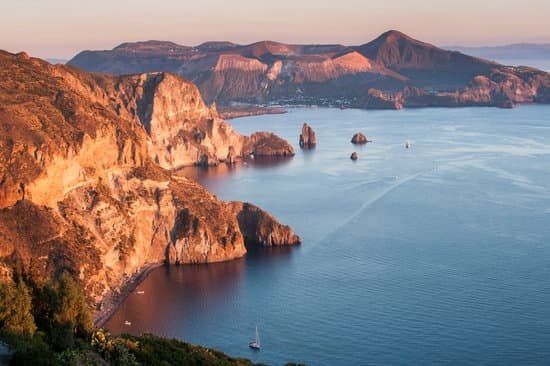Italy is a dream destination for many travelers, offering a rich tapestry of culture, history, and breathtaking scenery. One of the key factors in planning a successful trip to Italy is choosing the best time to visit this beautiful country.
Whether you’re looking to soak up the sun on the Amalfi Coast, explore the ancient ruins of Rome, or ski in the Alps, timing can make all the difference in your experience. In this article, we will delve into the nuances of Italy’s climate and weather patterns, peak tourist seasons, off-peak times to visit, popular events and festivals, as well as regional considerations to help you make the most of your Italian adventure.
When considering the best time to travel in Italy, it’s essential to understand the country’s diverse climate and weather patterns. From the snow-capped peaks of the Alps to the Mediterranean coastline, Italy experiences a wide range of temperatures and conditions throughout the year.
By familiarizing yourself with these variations, you can tailor your itinerary to suit your preferences and interests. Whether you prefer basking in the summer sun or cozying up by a fireplace in winter, there’s a perfect time for every type of traveler to explore Italy.
Moreover, understanding Italy’s peak tourist seasons can be crucial in planning a more enjoyable and less crowded trip. The summer months typically attract hordes of tourists seeking warm weather and beach days, while spring and fall offer milder temperatures and fewer crowds.
However,, each season has its unique charms and attractions – from seaside festivals in summer to truffle hunting in autumn – so choosing when to travel depends on your personal preferences and priorities. Let’s dive deeper into different seasons throughout the year that could influence your travel plans.
Overview of Italy’s Climate and Weather Patterns
Italy’s climate varies greatly depending on the region, with the north experiencing colder winters and the south enjoying warmer temperatures year-round. Generally, Italy has a Mediterranean climate, characterized by hot summers and mild winters. The coastal areas benefit from sea breezes, while the inland regions can experience more extreme temperatures.
The best time to travel in Italy largely depends on personal preferences and what activities you have in mind for your trip. Summer is peak tourist season in Italy, with July and August being the busiest months. These months offer perfect beach weather along the coast and ideal conditions for exploring Italy’s famous cities like Rome, Florence, and Venice. However, be prepared for crowds and higher prices during this time.
For those looking to avoid the crowds and enjoy milder weather, the shoulder seasons of spring (April to June) and fall (September to October) are excellent times to visit Italy. During these months, you can still experience pleasant weather for sightseeing and outdoor activities without the intense heat of summer.
Plus, you may be able to score better deals on accommodations and experience a more authentic Italian atmosphere with fewer tourists around. Ultimately, the best time to travel in Italy will depend on your preferences and priorities for your trip.
Peak Tourist Seasons in Italy
When planning a trip to Italy, it’s crucial to consider the peak tourist seasons to ensure you have the best experience possible. The busiest times of the year are usually during the summer months from June to August when the weather is warm, and many attractions and beach destinations are at their prime. This period is characterized by large crowds, long lines, and higher prices for accommodations and tours.
To avoid the peak tourist seasons in Italy and enjoy a more relaxed atmosphere with fewer crowds, consider visiting during the shoulder seasons in spring (April to May) or autumn (September to October). During these times, the weather is still pleasant, attractions are less crowded, and you may be able to find better deals on accommodations and activities. Additionally, you can witness Italy’s stunning landscapes painted in vibrant colors during autumn.
If you prefer a winter getaway, visiting Italy between November and February can also be an excellent option. While some regions may experience colder temperatures and fewer daylight hours, this time of year offers unique opportunities such as skiing in the Alps or exploring Christmas markets. Plus, you’ll have a chance to see iconic sites like the Colosseum in Rome without fighting through hordes of tourists.
For those looking for a balance between good weather and manageable crowds, the best time to travel in Italy would be during the shoulder seasons of spring or autumn. By choosing these off-peak times, you can make the most of your trip by enjoying comfortable weather while avoiding the peak tourist rush.
Off-Peak Times to Visit Italy
Italy, known for its beautiful landscapes, historic cities, and world-renowned cuisine, attracts tourists from all over the globe throughout the year. While peak tourist seasons in Italy can bring about overcrowded attractions and high prices, off-peak times offer a more authentic experience for travelers looking to explore this stunning country at a leisurely pace. Here are some of the best off-peak times to visit Italy:
- November to March: Winter in Italy is considered an off-peak season, especially in popular tourist destinations like Rome, Florence, and Venice. During this time, you can enjoy fewer crowds at famous landmarks, shorter lines at museums, and better deals on accommodations.
- April to June and September to October: Spring and fall are also great times to visit Italy if you want to avoid the peak summer crowds. The weather during these months is pleasant, making it ideal for exploring outdoor attractions and enjoying al fresco dining.
- Midweek Travel: To experience Italy without the hustle and bustle of weekend tourists, consider planning your trip from Monday to Thursday. This way, you can visit major sights with fewer crowds and snag better deals on accommodations and activities.
Traveling during off-peak times not only allows you to enjoy a more relaxed vacation but also gives you the opportunity to interact with locals on a deeper level and embrace the authentic Italian way of life. Whether you’re exploring historic sites in Rome or relaxing on the picturesque Amalfi Coast, visiting Italy during its quieter seasons can enhance your overall travel experience.
Be sure to pack appropriately for cooler temperatures or occasional rain showers during these off-peak months so that you can make the most of your trip.
Events and Festivals Throughout the Year
Italy is a country renowned for its vibrant culture and rich history, making it an ideal destination for travelers looking to experience unique events and festivals throughout the year. From religious celebrations to art exhibits, Italy offers an array of experiences that cater to different interests. One of the best times to travel in Italy for those seeking to immerse themselves in these cultural festivities is during key event periods.
One of the most famous events in Italy is the Venice Carnival, held in February each year. This extravagant masquerade ball attracts visitors from around the world who come to admire the elaborate costumes and masks worn by participants. Another popular event is the Siena Palio, a historic horse race that takes place twice a year in July and August. This tradition dates back to medieval times and showcases the competitive spirit of Italian culture.
For food enthusiasts, attending events like the Gelato Festival in Florence or the truffle festivals in Alba can be a deliciously delightful experience. These festivals celebrate Italy’s culinary heritage and offer visitors the chance to sample some of the best Italian cuisine. Whether you’re interested in art, music, food, or history, there is an event or festival in Italy that will capture your imagination and create lasting memories.
Overall, experiencing events and festivals throughout Italy adds an extra layer of excitement and cultural immersion to your trip. Planning your visit around these special occasions can enhance your overall travel experience and provide insight into Italian traditions and customs. With so many diverse events happening throughout the year, there’s always something new and exciting to discover during your time in Italy.
| Event/Festival | Month |
|---|---|
| Venice Carnival | February |
| Siena Palio | July / August |
| Gelato Festival (Florence) | Various Months |
| Truffle Festivals (Alba) | October / November |
Best Times to Visit Specific Regions in Italy (North, South, Coastal, Etc)
Italy is a country with diverse landscapes, from the breathtaking mountains in the North to the picturesque coastal regions in the South. Each region offers unique experiences and sights for travelers to enjoy. When planning your trip to Italy, it is essential to consider the best times to visit specific regions based on their climate and weather patterns.
The best time to visit Northern Italy, including cities like Milan and Venice, is during the spring months of April and May or in the fall from September to October. During these times, you can expect pleasant temperatures, blooming flowers, and fewer crowds compared to the summer months. The Italian Alps are particularly beautiful during these seasons, perfect for outdoor activities like hiking and sightseeing.
Heading towards Southern Italy, which includes popular destinations such as Naples, Amalfi Coast, and Sicily, the best time to travel is from late spring through early summer (May-June) or in September. These months offer warm weather without the scorching heat of July and August. You can explore ancient ruins, relax on stunning beaches, and indulge in delicious local cuisine without battling massive tourist crowds.
When it comes to visiting Italy’s beautiful coastal regions like Cinque Terre or Amalfi Coast, late spring (May) or early fall (September-October) are ideal times. The weather is still warm enough for swimming and sunbathing but not as crowded as peak summer months. You can enjoy leisurely strolls along cliffside villages or take boat trips along the rugged coastlines without feeling overwhelmed by tourists.
| Region | Best Time to Visit |
|---|---|
| Northern Italy | Spring (April-May) & Fall (September-October) |
| Southern Italy | Late Spring (May-June) & September |
| Coastal Regions | Late Spring (May) & Early Fall (September-October) |
Tips for Budget Travelers to Italy
For budget travelers planning a trip to Italy, there are a few key tips to keep in mind to make the most of your experience without breaking the bank. One of the most important factors to consider when trying to save money while visiting Italy is the timing of your trip.
The best time to travel in Italy for budget-conscious travelers is during the shoulder seasons, which are typically spring (April-May) and fall (September-October). During these times, you can avoid the peak tourist crowds and high prices while still enjoying pleasant weather and fewer tourists.
Accommodation Options
When it comes to finding affordable accommodation in Italy, there are plenty of options available for budget travelers. Consider staying in hostels, guesthouses, or Airbnb rentals instead of luxury hotels. Additionally, booking your accommodations well in advance can help you secure better deals and save money on your stay.
Another tip is to look for lodging outside major cities or tourist hotspots where prices tend to be higher. By opting for more local neighborhoods, you can experience authentic Italian culture while saving some money.
Dining on a Budget
Eating out in Italy can be a delightful culinary experience, but it can also add up quickly if you’re not careful. To save money on food while exploring Italy, consider opting for local trattorias or family-run restaurants instead of touristy eateries located near popular attractions. Another tip is to have your big meal at lunchtime when many restaurants offer fixed-price menus that are more affordable than dinner options.
Additionally, don’t forget about street food vendors like panini shops or gelaterias where you can enjoy delicious Italian snacks at a lower cost. With some planning and savvy choices, you can savor the best of Italian cuisine without breaking your budget while visiting this beautiful country.
Transportation Savings
Getting around Italy doesn’t have to be expensive if you know how to navigate the transportation options available efficiently. Consider using public transportation such as trains or buses instead of taxis or private cars to save money on getting from one place to another. If you plan on traveling between cities, look for discount passes like the Italy Interrail pass for train travel which can offer significant savings for multiple journeys within a designated period.
Additionally, consider walking or renting bicycles in smaller towns or rural areas where exploring on foot can be both cost-effective and enjoyable. By being strategic with your transportation choices, you can optimize your budget while moving around this picturesque country during the best time to travel in Italy for budget-conscious travelers.
Packing List for Different Seasons in Italy
When planning a trip to Italy, it’s crucial to consider the seasonal variations and how they can impact your packing list. Depending on the time of year you visit, you’ll need to pack accordingly to ensure your comfort and enjoyment during your travels. Here are some tips for creating a packing list for different seasons in Italy:
Spring (March to May)
Spring in Italy is a beautiful time to visit as flowers bloom, and the weather starts to warm up. However, it can still be quite unpredictable with occasional rain showers. When packing for spring in Italy, make sure to bring layers such as lightweight sweaters or jackets that can be easily removed if it warms up during the day. Comfortable walking shoes are essential for exploring Italian cities and cobblestone streets.
Summer (June to August)
Summer is peak tourist season in Italy, with hot temperatures and crowded attractions. When packing for summer in Italy, be sure to pack lightweight clothing such as breathable shirts and shorts. Don’t forget essentials like sunscreen, a hat, sunglasses, and a refillable water bottle to stay hydrated while sightseeing. If you plan on visiting churches or other religious sites, remember to pack clothing that covers your shoulders and knees.
Fall (September to November)
Fall in Italy is another fantastic time to visit as temperatures start to cool down after the summer heat. When packing for fall in Italy, bring layers like sweaters, scarves, and jackets that can easily be added or removed depending on the weather. Umbrella is also recommended as there may be occasional rain showers during this season. Comfortable walking shoes are still essential for exploring Italian cities.
By tailoring your packing list based on the season you’ll be traveling through Italy, you can ensure a more enjoyable and comfortable experience during your trip. Remember to consider not only the weather but also any specific activities or events you’ll be participating in when deciding what items to bring along with you.
Conclusion
When planning your trip to Italy, choosing the best time to travel is crucial in ensuring you have a memorable experience. As highlighted throughout this article, Italy’s diverse climate and varied regions offer travelers a plethora of options depending on their preferences.
Whether you are looking to soak up the sun on the Italian Riviera, explore the historic cities in cooler temperatures, or immerse yourself in local festivals and events, there is a perfect time for everyone to visit this beautiful country.
Many travelers may find that the shoulder seasons of spring and fall provide the optimal balance of pleasant weather, fewer crowds, and more affordable prices. During these times, you can enjoy comfortable temperatures for sightseeing, vibrant landscapes adorned with blooming flowers or autumnal colors, and a more authentic experience as you interact with locals without competing with hordes of tourists.
Additionally, specific regions like Tuscany or Sicily may have their own unique best times to visit based on local festivities or agricultural cycles.
In conclusion, by carefully considering the climate patterns, tourist seasons, events calendar, budget-friendly tips, and region-specific recommendations outlined in this article, you can make the most of your trip to Italy at the best time to travel. Whether you are a history buff exploring ancient ruins, a foodie delighting in authentic Italian cuisine, or a nature enthusiast seeking breathtaking landscapes, Italy has something to offer year-round.
Start planning your dream Italian getaway today based on what suits your interests and preferences best.
Frequently Asked Questions
What Is the Best Month to Go to Italy?
The best month to go to Italy really depends on personal preferences. However, many people would say that May or September are ideal. During these months, the weather is pleasant, attractions are less crowded, and prices may be slightly lower compared to peak season.
What Is the Cheapest Month to Go to Italy?
If you’re looking for a budget-friendly trip to Italy, consider visiting during the off-peak months of November through March. During these months, you’re more likely to find discounted airfare and accommodation rates. Just keep in mind that some attractions and restaurants may have limited hours during this time.
What Month Does Everything Close in Italy?
August is the month when many Italians go on vacation leading to the phenomenon known as “Ferragosto.” During this time, you’ll find that businesses, especially smaller family-run establishments, may close for an extended period. It’s essential to check ahead of time if your favorite spots will be open if you plan on traveling to Italy in August.

I’m a passionate traveler, writer, and Italophile. My fascination with Italy’s history, art, and culture has led me on countless adventures across the Italian landscape. Through “I Live Italy,” I share my love for this extraordinary country and aims to inspire others to explore its boundless beauty.





